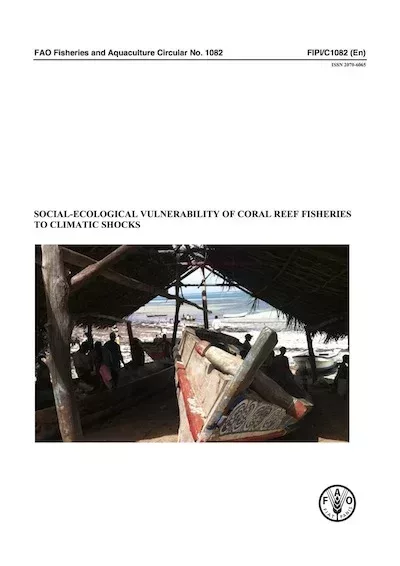This circular examines the vulnerability of coral reef social-ecological communities to one effect of climate change, coral bleaching. The objective was to develop and test in Kenya a community-level vulnerability assessment approach that incorporated both ecological and socio-economic dimensions of vulnerability in order to target and guide interventions to reduce vulnerability. In addition to a range of direct threats such as siltation, overfishing and coral disease, coral reefs are now threatened by climate change. Climate impacts on coral reefs and associated fisheries include: increasing seawater temperatures; changes in water chemistry (acidification); changes in seasonality; and increased severity and frequency of storms, which affect coral reef ecosystems as well as fisheries activities and infrastructure. Coral bleaching and associated coral mortality as a result of high seawater temperatures is one of the most striking impacts of climate change that has been observed to date. As warming trends continue, the frequency and severity of bleaching episodes are predicted to increase with potentially fundamental impacts on the world’s coral reefs and on the fisheries and livelihoods that depend on them. The analysis presented in this circular combined ecological vulnerability (social exposure), social sensitivity and social adaptive capacity into an index of social-ecological vulnerability to coral bleaching. All three components of vulnerability varied across the sites and contributed to the variation in social-ecological vulnerability. Comparison over time showed that adaptive capacity and sensitivity indices increased from 2008 until 2012 owing to increases in community infrastructure and availability of credit. Disaggregated analysis of how adaptive capacity and sensitivity varied between different segments of society identified the young, migrants and those who do not participate in decision-making as having both higher sensitivity and lower adaptive capacity and, hence, as being the most vulnerable to changes in the productivity of reef fisheries. The PDF publication can be downloaded from the following url: http://www.fao.org/3/ap972e/ap972e.pdf

